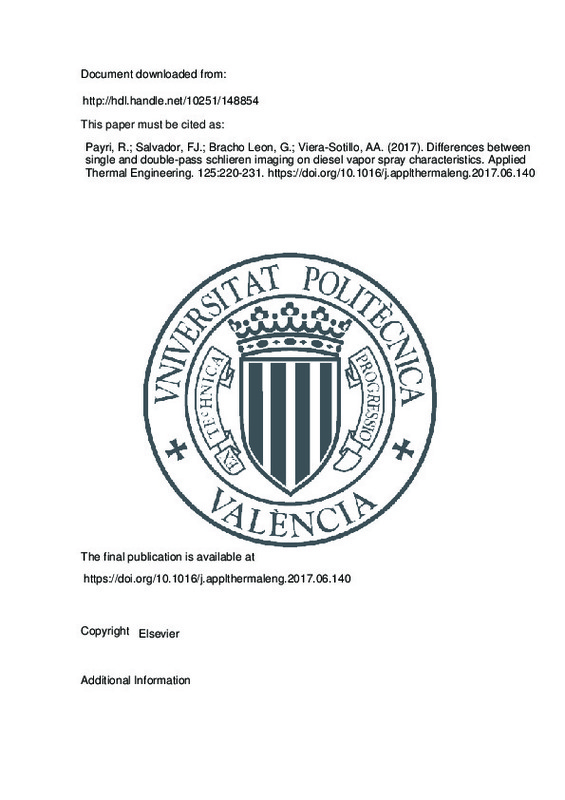JavaScript is disabled for your browser. Some features of this site may not work without it.
Buscar en RiuNet
Listar
Mi cuenta
Estadísticas
Ayuda RiuNet
Admin. UPV
Differences between single and double-pass schlieren imaging on diesel vapor spray characteristics
Mostrar el registro completo del ítem
Payri, R.; Salvador, FJ.; Bracho Leon, G.; Viera-Sotillo, AA. (2017). Differences between single and double-pass schlieren imaging on diesel vapor spray characteristics. Applied Thermal Engineering. 125:220-231. https://doi.org/10.1016/j.applthermaleng.2017.06.140
Por favor, use este identificador para citar o enlazar este ítem: http://hdl.handle.net/10251/148854
Ficheros en el ítem
Metadatos del ítem
| Título: | Differences between single and double-pass schlieren imaging on diesel vapor spray characteristics | |
| Autor: | Viera-Sotillo, Alberto Antonio | |
| Entidad UPV: |
|
|
| Fecha difusión: |
|
|
| Resumen: |
[EN] The use olschlieren imaging at high acquisition rate has been adopted as a standard optical technique for the analysis of vaporizing diesel sprays under engine-like conditions. A single-pass schlieren arrangement is ...[+]
|
|
| Palabras clave: |
|
|
| Derechos de uso: | Reconocimiento - No comercial - Sin obra derivada (by-nc-nd) | |
| Fuente: |
|
|
| DOI: |
|
|
| Editorial: |
|
|
| Versión del editor: | https://doi.org/10.1016/j.applthermaleng.2017.06.140 | |
| Código del Proyecto: |
|
|
| Agradecimientos: |
This research has been partially funded by FEDER and Spanish Ministerio de Economia y Competitividad through project TRA2015-67679-C2-1-R. Additionally, Alberto Viera is supported through the FPI contract 2016-S2-1361 of ...[+]
|
|
| Tipo: |
|







![[Cerrado]](/themes/UPV/images/candado.png)


